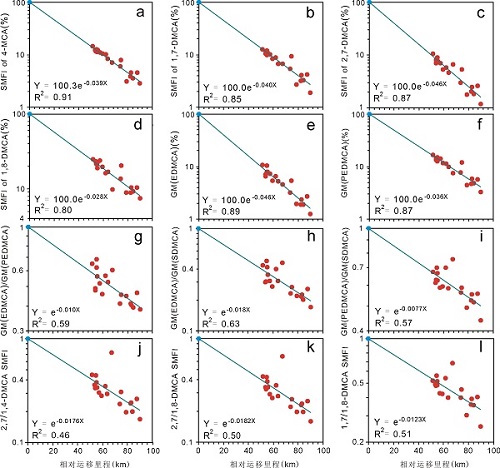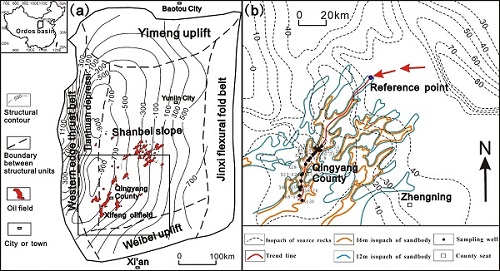A novel molecular index for secondary oil migration distanceUpdate time:09 09, 2013
Professor ZHANG Liuping and his team advance the concept of a secondary migration fractionation index (SMFI) as a reliable measure of migration fractionation and migration distances for a uniform migration system, where porosity, density of solids, sorption coefficients, migration velocity of oil and oil saturation are kept constant. More realistic migration systems with variable properties could be treated by dividing them into subsections with constant properties. They then apply and test the validity of the new index in the Ordos and Western Canada Sedimentary basins where both concentrations and ratios of carbazoles do not effectively reflect migration-related fractionations and thus the distances of secondary petroleum migration. Their index provides a new tool that can aid in the discovery of new resources via accurate assessment of the directions, pathways and distances of petroleum migration. The method established for calculation of the SMFI in this paper may or may not be universally applicable to oil accumulations with other than a simple linear geometry. The method for complex petroleum migration systems is the subject of future investigation.
Figure 1 Correlations showing inferred relative migration distances from SMFIs of alkylcarbazoles, the geometric SMFI means of different kinds of dimethyl carbazoles and their ratios in the Xifeng Oilfield. (Image by ZHANG)
Figure 2 Distributions of oilfields and the main source rocks in the Ordos Basin, China.(Image by ZHANG) Zhang et al. A novel molecular index for secondary oil migration distance. Scientific Reports, 2013, 3: 2487, doi: 10.1038/srep02487Download Here)
|
Contact
Related Articles
Reference
|
-
SIMSSecondary Ion Mass Spectrometer Laboratory
-
MC-ICPMSMultiple-collector ICPMS Laboratory
-
EM & TEMElectron Microprobe and Transmission Electron Microscope Laboratory
-
SISolid Isotope Laboratory
-
StIStable Isotope Laboratory
-
RMPARock-Mineral Preparation and Analysis
-
AAH40Ar/39Ar & (U-Th)/He Laboratory
-
EMLElectron Microscopy Laboratory
-
USCLUranium Series Chronology Laboratory
-
SASeismic Array Laboratory
-
SEELaboratory of Space Environment Exploration Laboratory
-
PGPaleomagnetism and Geochronology Laboratory
-
BioMNSFrance-China Bio-mineralization and Nano-structure Laboratory

 Print
Print Close
Close

